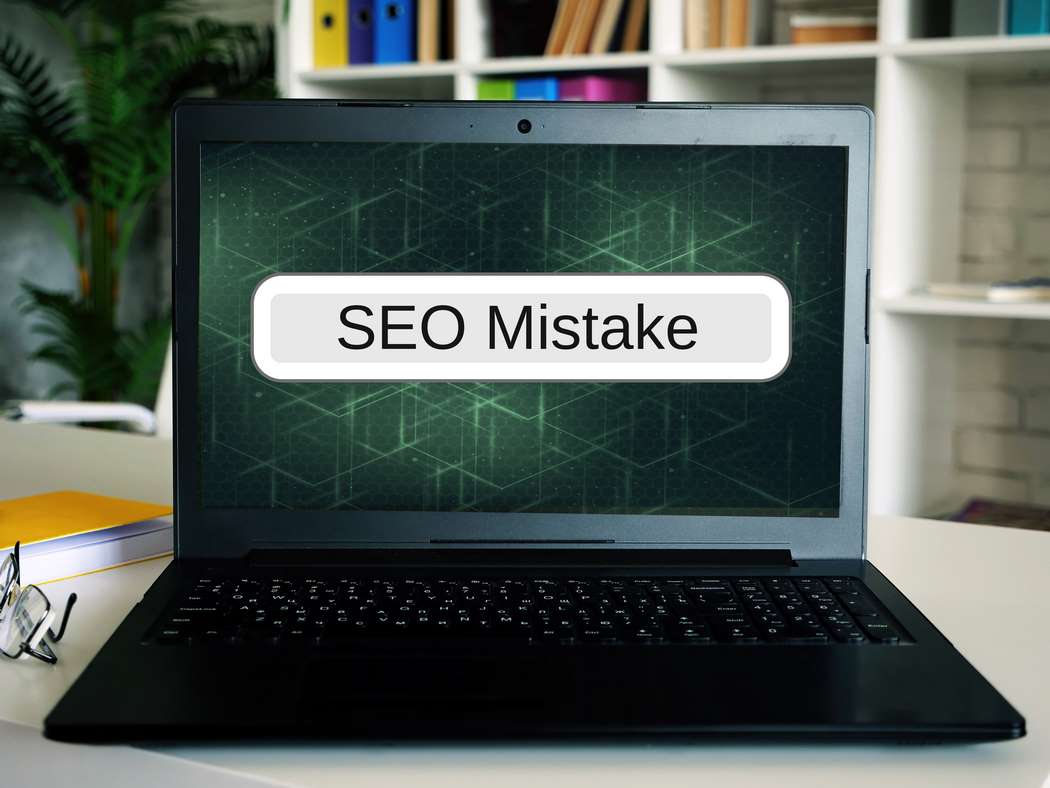
SEO or Search Engine Optimization is a way of making your website rank better by increasing traffic to your site. A well-optimized site should land on Google’s first page—that’s where the valuable real estate is, and that’s where websites aim to be. This article focuses on a few critical SEO mistakes that prevent a website from ranking higher and how to fix them.
- Mistakes On Keyword Optimization
Putting out high-quality content is all well and good, but if nobody sees it, your content might as well have the ‘Lorem ipsum’ text and no one would be the wiser. So, to get people to notice the content, marketers use tools like keyword optimization. Unfortunately, high-volume keywords can sometimes get overemphasized and keywords that are wrong for their content and niche are optimized instead.
Optimizing the wrong keyword is distressingly common. Careless use of keyword research tool is often the culprit—running the tool and selecting the top result is what usually happens. But the top result might not be the keyword you’re looking for. Keep in mind that not all keywords are equal. Some could even be detrimental to your conversion.
Applying the fix: The top ten results for your target keywords should be analyzed and evaluated. Identify what the users are looking for. Understanding what they’re searching for could help you provide contents that would satisfy their queries.
You could try competitor keyword research. Find out the top keywords the other sites in your niche are using and use them to create better and more attractive content. Also, when your target audience is local, optimizing for global keywords won’t do you any good. Keep your optimization local.
Generic keywords should also be avoided, as they will attract unmotivated and irrelevant traffic that isn’t useful to your brand. You should consider optimizing not only commercial keywords, but informational keywords as well.
- Keyword Cannibalization
This means that your content—articles, blogs, or what-have-you, are competing with each other and showing up in Google’s search results for identical search queries. This happens when you have articles that have the same or very similar topics and the same keywords or phrases are optimized. Similar articles in your site that target the same keyword could ‘eat away’ each other’s ranking. Essentially, you’d be competing with your own content.
Applying the fix: Find out which among the competing articles has a higher quality and the best answer for the search engine queries. You can do this by using analytic tools. While ascertaining which article or articles have to be pruned, you could evaluate the rest of the content that uses the same keyword. You can also combine articles that are closely related to avoid internal keyword cannibalization.
- Irregular Site Auditing
Your SEO can suffer if your site isn’t subjected to regular auditing. Problems could crop up over time and it’s best if you catch them as soon as they appear. This is accomplished by regularly auditing and examining your website. Many of these problems such as slow site speed, duplicated content, broken links, and others, could be addressed by a simple site audit.
Applying the fix: There are various auditing tools that you can use for your website’s analysis. It’s as simple as entering your site URL and let the tool run. These tools also generate a report after the analysis so you can identify the problems and address them as soon as possible.
- Poor Internal Link Structure
Your content has a high chance of being discovered by users if your site’s internal link structure is optimal. It can inform users and bots of your site’s important, as well as relevant pages. Internal links can also help site visitors to navigate your website easily.
If you have a page that has many links pointing to it, chances are, search engines will give you a high enough ranking on their SERP, or search engine result page. A website with a messed-up internal link structure is at risk of going unnoticed by search engines.
Applying the fix: Check the links and make sure that they add value to your visitor’s experience. Links shouldn’t only be relevant, but they should work, too. Broken links are a no-no. Continuing to develop and update the keyword map of your website would help a lot in preventing a messed-up internal link structure. A working keyword map helps in finding out the correct anchor text to link with your target pages.
Conclusion
The issues cited here are just some of the critical SEO mistakes that can hobble your website. They’re easily fixable, but before you can fix them, you have to be aware of them first. That’s why you should always perform regular audits on your site. With SEO constantly evolving, it’s a good idea to always keep track of the latest trends and developments.
Errors like these might hurt your site, but it’s nothing that an application of a decent SEO strategy can’t fix. Continued monitoring of your website’s performance and you can soon get on the right track.

Learn Important Facts About Digital Marketing That Everyone Should Know - Brontobytes Blog
[…] a key component of SEO is backlinking. Backlinking is the process where an SEO company will use writers and creators to […]